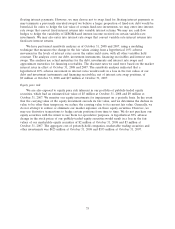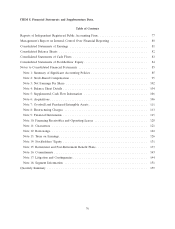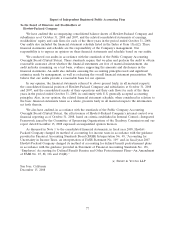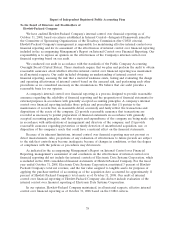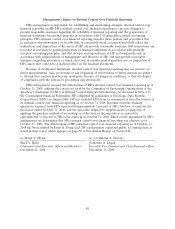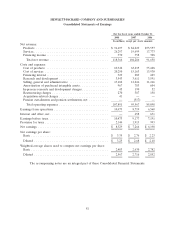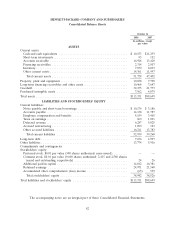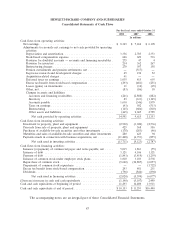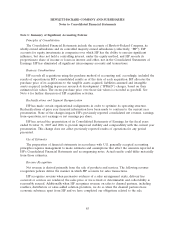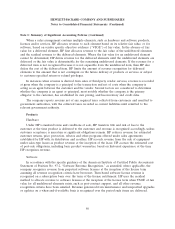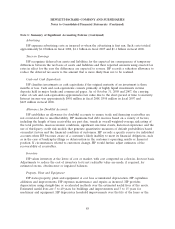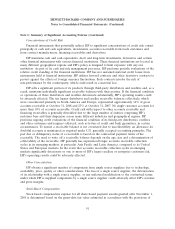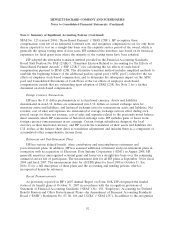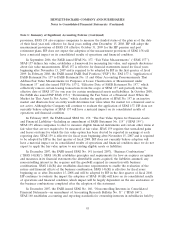HP 2008 Annual Report Download - page 91
Download and view the complete annual report
Please find page 91 of the 2008 HP annual report below. You can navigate through the pages in the report by either clicking on the pages listed below, or by using the keyword search tool below to find specific information within the annual report.HEWLETT-PACKARD COMPANY AND SUBSIDIARIES
Notes to Consolidated Financial Statements
Note 1: Summary of Significant Accounting Policies
Principles of Consolidation
The Consolidated Financial Statements include the accounts of Hewlett-Packard Company, its
wholly-owned subsidiaries and its controlled majority-owned subsidiaries (collectively, ‘‘HP’’). HP
accounts for equity investments in companies over which HP has the ability to exercise significant
influence, but does not hold a controlling interest, under the equity method, and HP records its
proportionate share of income or losses in interest and other, net in the Consolidated Statements of
Earnings. HP has eliminated all significant intercompany accounts and transactions.
Business Combinations
HP records all acquisitions using the purchase method of accounting and, accordingly, included the
results of operations in HP’s consolidated results as of the date of each acquisition. HP allocates the
purchase price of its acquisitions to the tangible assets acquired, liabilities assumed and intangible
assets acquired, including in-process research & development (‘‘IPR&D’’) charges, based on their
estimated fair values. The excess purchase price over those fair values is recorded as goodwill. See
Note 6 for further discussion of HP acquisition activities.
Reclassifications and Segment Reorganization
HP has made certain organizational realignments in order to optimize its operating structure.
Reclassifications of prior year financial information have been made to conform to the current year
presentation. None of the changes impacts HP’s previously reported consolidated net revenue, earnings
from operations, net earnings or net earnings per share.
HP has revised the presentation of its Consolidated Statements of Earnings for the fiscal years
ended October 31, 2007 and 2006 to provide improved visibility and comparability with the current year
presentation. This change does not affect previously reported results of operations for any period
presented.
Use of Estimates
The preparation of financial statements in accordance with U.S. generally accepted accounting
principles requires management to make estimates and assumptions that affect the amounts reported in
HP’s Consolidated Financial Statements and accompanying notes. Actual results could differ materially
from those estimates.
Revenue Recognition
Net revenue is derived primarily from the sale of products and services. The following revenue
recognition policies define the manner in which HP accounts for sales transactions.
HP recognizes revenue when persuasive evidence of a sales arrangement exists, delivery has
occurred or services are rendered, the sales price or fee is fixed or determinable and collectability is
reasonably assured. Additionally when HP recognizes revenue on sales to channel partners, including
resellers, distributors or value-added solution providers, we do so when the channel partners have
economic substance apart from HP and we have completed our obligations related to the sale.
85


